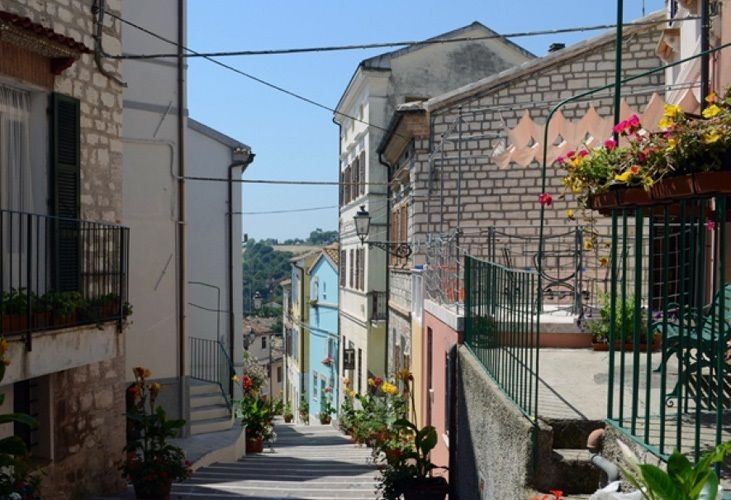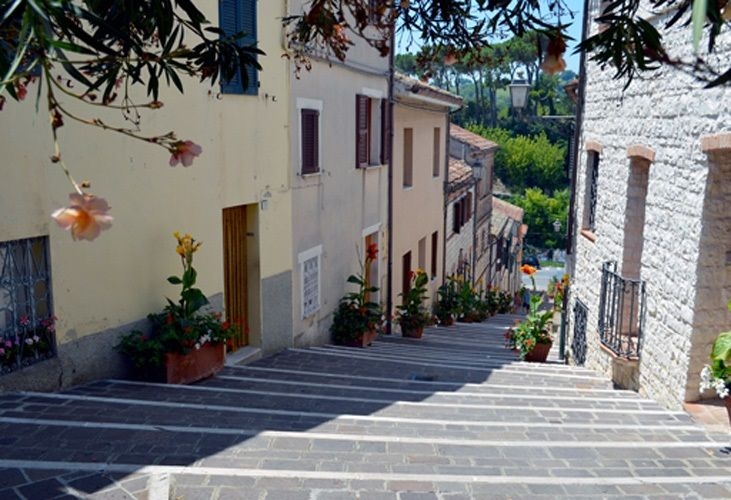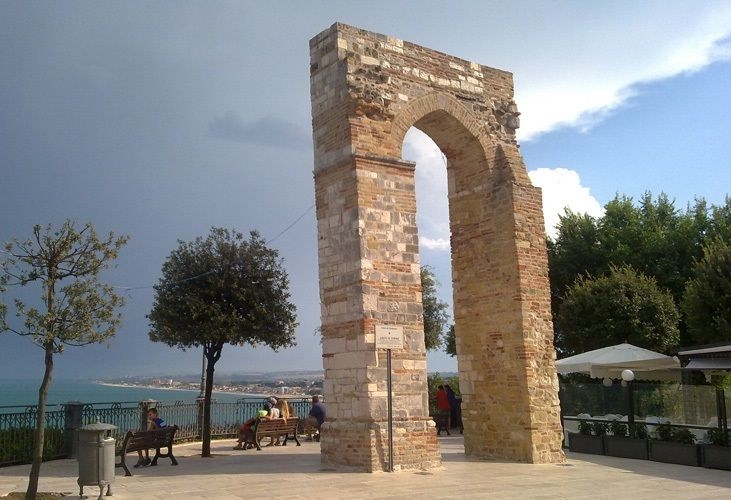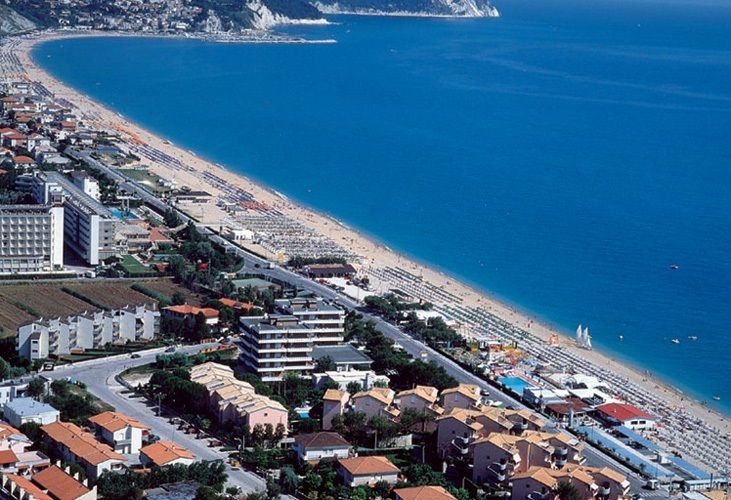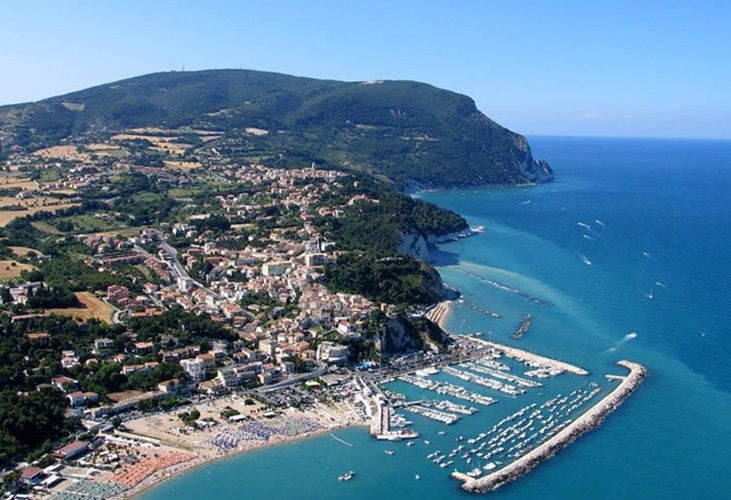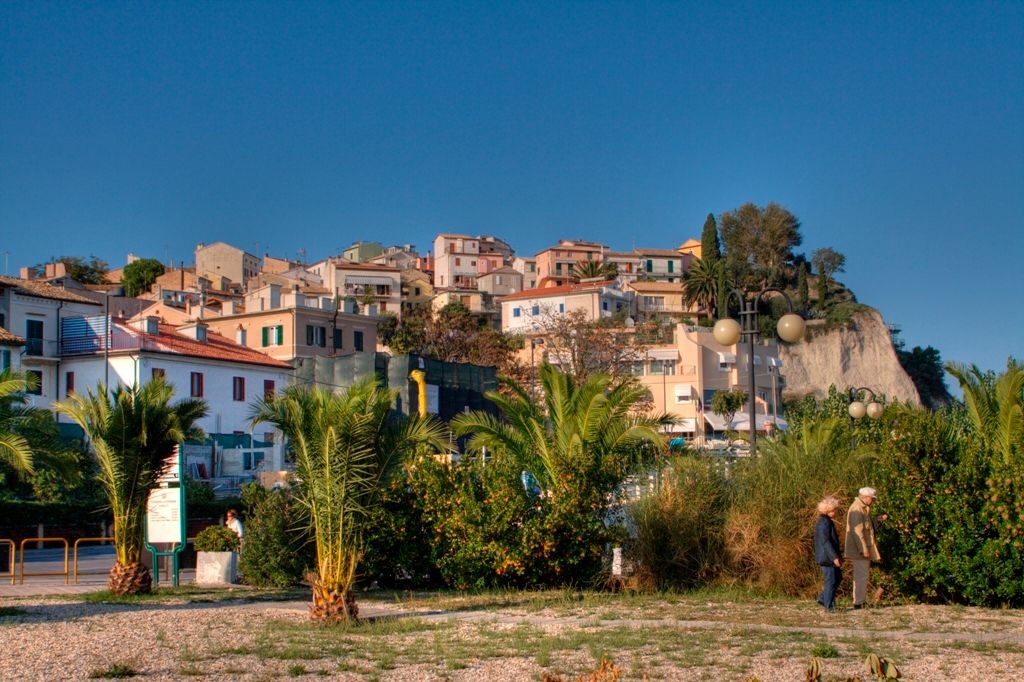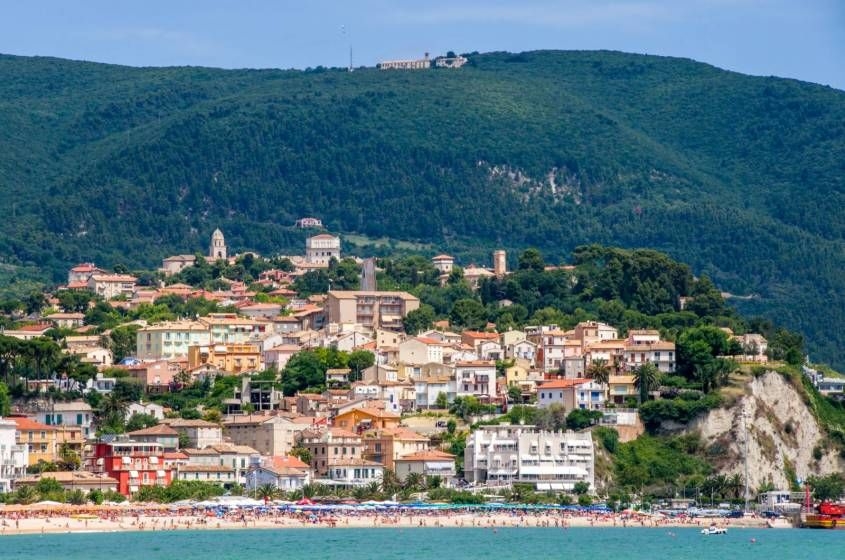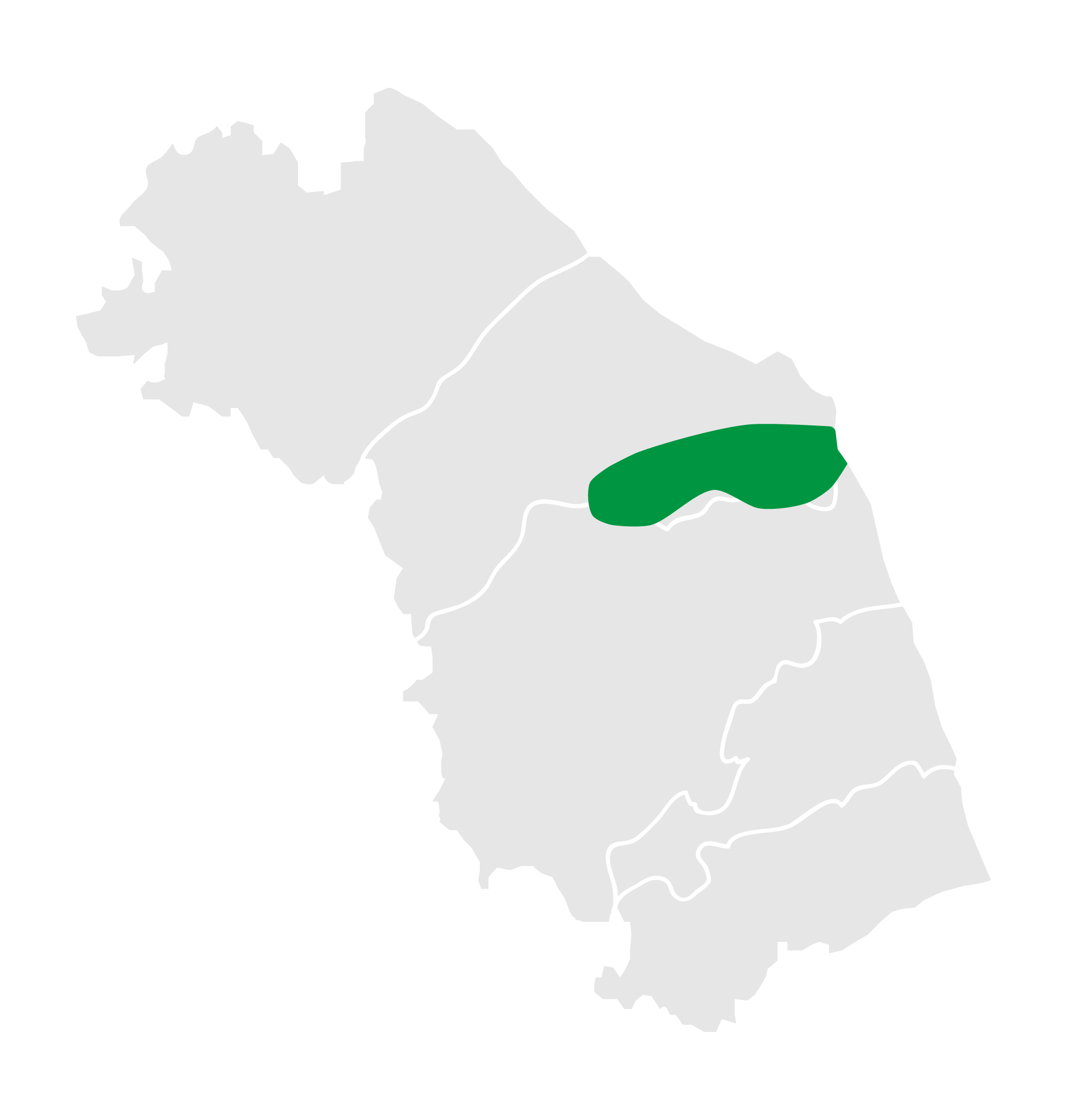
Set in a natural inlet on the southern slopes of Monte Conero, Numana has revealed ancient signs of local human activity with the first settlements of its territory dating back to the end of the Bronze Age. The site's particular location, on the top of a promontory near a natural harbor, favored the birth of a small-scale emporium, or trading post, in Picene times, which had its greatest development in the second half of the 6th century BC and lasting until the 4th century BC. It was during this period that trade contacts intensified with the Greek area and with the eastern Mediterranean. Numana then became one of the most important Adriatic emporia, second only to Ancona in the mid-Adriatic area. Over time, the coast changed appearance as a result of landslides and marine erosion leading to the loss of much of the ancient natural harbor and the area occupied by the settlement. This is today attested to by few finds in Piazza del Crocifisso and Piazza del Comune. The Picene settlement was followed by the Roman one in the same area. Extensively attested to, however, are the burial areas located in the territories of the current municipalities of Sirolo and Numana. The oldest necropolis, dating back to between the 9th and 8th centuries BC, was identified in Via Leopardi and Via Matteotti, in the center of Numana; another large necropolis, in use from the 9th to the 3rd centuries BC, is documented in the Quagliotti e Davanzali lands. A selection of finds from these necropolises is today exhibited in the State Antiquarium of Numana.
We have found no place to eat in the vicinity
We have found no place to sleep in the vicinity
Da Pesaro a San Benedetto del Tronto, lungo la costa Adriatica, alla scoperta dei principali porti e approdi frequentati dall’età del bronzo a oggi. Alla foce di fiumi e torrenti, entro piccole baie, promontori e grandi insenature, si svilupparono nell’antichità porti, porti canale, empori o semplici approdi. Questi scali furono il fulcro di una fitta rete di commerci marittimi che hanno dato vita a un intenso dialogo tra oriente e occidente, testimoniato dai ritrovamenti di reperti provenienti da tutto il bacino del Mediterraneo.

|
Address | Piazza del Santuario 24 Numana |
